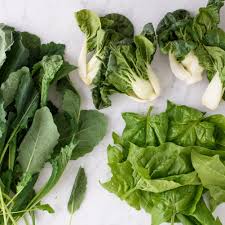Nutrition: Health benefits of consuming green leafy vegetables

Vegetables are an essential component of your diet and not getting enough of them can have harmful effects on your health. Every function in your body, from your immune system to your bowel regulation, requires regular and adequate intake of vegetables.
According to the US Centres for Disease Control and Prevention (CDC), you need to consume two to three cups of vegetables daily to meet your dietary requirements for fibre and other nutrients. Green leafy vegetables have been known for a long time to be some of the most nutrient dense vegetables you can add to your diet.
But, in recent years, baby greens and micro-greens have also gained immense popularity across the world. Now, if you’re wondering what’s the difference between these three types of greens you should know it is all about the stages of plant growth.
Plant seeds germinate and sprout and from there on they slowly progress into micro-greens, then baby greens and eventually fully grown green leafy vegetables. The benefits of green leafy vegetables are well-known.
A study in Genes & Nutrition in 2020 says that of all vegetables, green leafy ones like spinach, collard, kale, lettuce and cabbage deserve special attention because their intake is linked with lower risks of coronary heart disease, hypertension and type 2 diabetes.
“Green leafy vegetables are rich sources of iron, folic acid, fibre and other nutrients,” says Akanksha Mishra, a Nutrition and Wellness Expert associated with myUpchar.
“If you are planning to manage your risk of diabetes, obesity or coronary artery disease then these vegetables can be your best bet in food. You can add these as a soup, steamed vegetable or curry in your diet.”
While baby greens might be younger than green leafy vegetables, they don’t fall short on nutrition. A 2014 study in the Journal of Chromatography suggests that baby greens rose in popularity because, unlike green leafy vegetables, you don’t need to cook them at all or for too long. This – and the fact that baby greens have a higher concentration of antioxidants – made baby greens like baby spinach, fenugreek, horse gram, pea shoots, watercress, rocket, Swiss chard, spearmint and mustard greens very convenient additions to regular meals, especially salads.
“Baby greens are harvested when they are 15 to 40 days old,” Mishra explains.
“They’re more tender and bite-sized. They contain a good variety of polyphenols and other antioxidants which can be beneficial for Alzheimer’s disease, diabetes, obesity, heart disease and certain types of cancers. Eating baby greens can also lower your risk of these diseases.”
Any plant that germinates is likely to go through the micro-green phase, whether it ultimately grows into a green leafy vegetable or not. This makes micro-greens of a wide variety of vegetables available to us, including micro-greens of cauliflower, broccoli, cabbage, watercress, radish, arugula lettuce, endive, chicory, dill, carrots, fennel, celery, garlic, leeks and onions.
This versatility and the complete lack of required cooking make micro-greens one of the latest trends in food and nutrition globally.
A study published in the Journal of Agricultural and Food Chemistry in 2018 says that although micro-greens are small and have delicate textures and flavours, they are packed with greater amounts of nutrients and micronutrients than their mature counterparts.
The study suggests that consuming even smaller amounts of micro-greens can therefore provide nutritional benefits similar to larger quantities of mature vegetables.
“Micro-greens are vegetables or herbs that are harvested just after they’ve sprouted and produced their first set of true leaves,” Mishra says.
“They’re compressed versions of green leafy vegetables and rich in nutrients like vitamins C, E and K, which are beneficial for skin, hair, nails and blood-related problems. You can have these micro-greens in your salad, sandwiches and dressings.”
Now that you know what benefits green leafy veggies, baby greens and micro-greens can provide you, which one should you have more of ?
“All these greens are nutrient-dense and beneficial for different health conditions. So, try to add them all to your diet for wholesome benefits but definitely add more micro-greens in your sandwiches, juices, soups and salads as they have up to 40 times higher nutrients than mature leaves,” Mishra suggests.
“You can even grow your own microgreens to avoid harmful chemicals.”
The Daily Times
